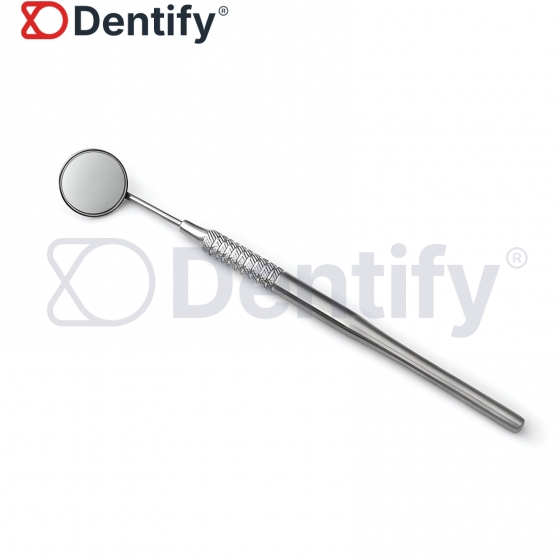The Essential Role of Mouth Mirrors in Every Dental Practice
When it comes to dental diagnostics, few tools are as universally recognised and relied upon as the humble mouth mirror. Whether you’re browsing through your instrument kit or observing a procedure in action, this reflective tool is always in use. At Dentify Dental, we understand the significance of quality in even the simplest tools, and mouth mirrors are no exception.
You can view our selection here: Mouth Mirrors – Dentify Dental
What Is a Mouth Mirror?
A mouth mirror, sometimes referred to as a dental mirror, is a small, round mirror attached to a metal handle. It’s primarily used for indirect vision, retraction, and illumination inside the oral cavity. The mirror helps dentists examine hard-to-see areas such as the backside of teeth, gum lines, and occlusal surfaces.
While its design may seem straightforward, the precision and quality of materials make all the difference in a clinical environment.
Why Every Dental Setup Needs Reliable Mouth Mirrors
Professionals rely on mouth mirrors for multiple essential functions:
- Indirect Vision: Enables the practitioner to see inside areas that are otherwise hidden from direct line of sight, especially the posterior teeth.
- Soft Tissue Retraction: Helps gently move the tongue or cheek aside for better access.
- Light Reflection: Illuminates dark areas of the mouth by reflecting operatory light directly into targeted zones.
Types of Mouth Mirrors Available
Dentify Dental provides a carefully selected range of diagnostic tools, and our mouth mirrors come in different types and sizes to suit the preferences of dental professionals. Common variations include:
- Plain Mirror: Offers a true reflection without magnification. Preferred for its optical clarity.
- Front Surface Mirror: Coated on the front to eliminate double images or ghosting. This type is popular in clinical settings for its sharp, undistorted reflections.
- Magnifying Mirror: Though less commonly used, it offers enhanced visibility for detailed inspection.
All our mirrors are crafted with high-grade stainless steel to ensure sterility, durability, and optimal weight for hand comfort.
Features That Make a Difference
At Dentify Dental, our diagnostic mirrors are built for consistent use and reliable performance. Some of the features that dental professionals appreciate include:
- Corrosion-resistant stainless steel for repeated sterilisation cycles
- Threaded heads for easy replacement and custom handle pairing
- Ergonomic grip to reduce fatigue during long procedures
Our full collection is available at: Mouth Mirrors Collection
Frequently Asked Questions (Without Clinical Advice)
1. Are mouth mirrors reusable?
Yes. The models offered at Dentify Dental are autoclavable and designed for long-term use, assuming they are properly maintained between procedures.
2. What sizes are available?
We typically stock sizes 4 and 5, which are most common in practice. You can refer to the product page for size availability.
3. Are these mirrors compatible with most standard handles?
Absolutely. Our mirrors use industry-standard threading, ensuring compatibility with most diagnostic handles.
4. What’s the difference between a plain and a front surface mirror?
Plain mirrors reflect from the back side of the glass, while front surface mirrors reflect from the front, offering clearer images without duplication.
Why Dentify Dental?
We’re committed to supplying professional-grade dental instruments trusted by clinics across Australia. Whether you’re refreshing your practice’s inventory or setting up a new operatory, our diagnostic tools are selected for performance, value, and reliability.
We ship Australia-wide, and all orders are processed from our Melbourne base, ensuring timely delivery and trusted service.
Disclaimer: This content is provided for product description purposes only. It does not constitute medical advice or guidance on clinical use.












